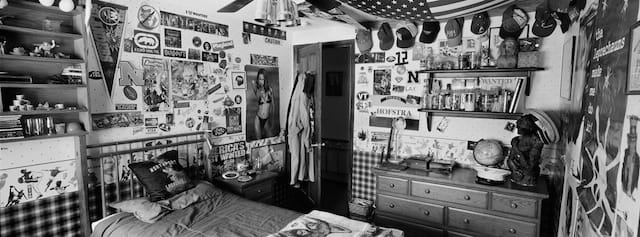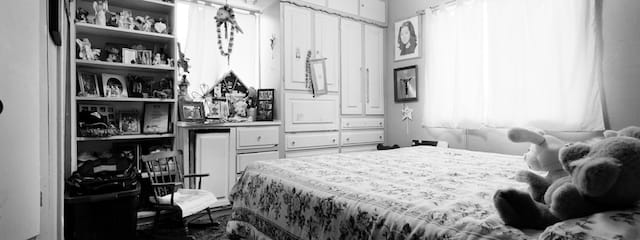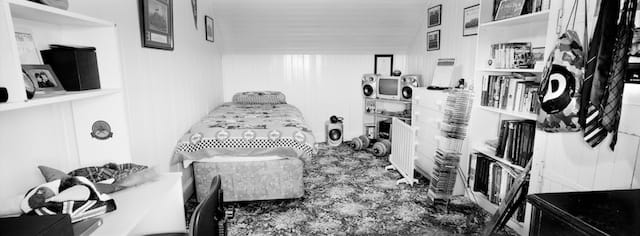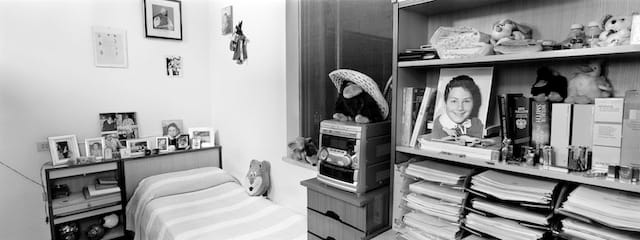Soldiers' Bedrooms Become Makeshift Memorials
Tomorrow, New Yorkers will flock to the newly opened National September 11 Memorial & Museum in lower Manhattan to remember the nearly 3,000 lives that were lost on that day.

Tomorrow, New Yorkers will flock to the newly opened National September 11 Memorial & Museum in lower Manhattan to remember the nearly 3,000 lives that were lost on that day. In the long, controversial “War on Terror” that’s followed, many more men and women have died, both soldiers and non-combatants. The bedrooms left behind by some of those soldiers have become their own de facto memorials, as documented in Ashley Gilbertson’s series Bedrooms of the Fallen, to be exhibited at Photoville later this month.
A member of the award-winning photo agency VII, Gilbertson photographed the bedrooms of 40 troops — the same number in a platoon — in the United States, Canada, and Europe. Little distinguishes them from the private rooms of other young Westerners, save that many have been untouched for years.

Among them is the bedroom of 20-year-old Army Private First Class Karina S. Lau, from Livingston, California. Insurgents shot down her helicopter in Falluja in 2003. In 2009, when Gilbertson photographed it, Lau’s floral bedspread was smooth, her stuffed animals carefully arranged below her pillow. Photographs and tchotchkes cluttered the shelves. Her parents were likely too pained to repurpose the room — their only addition was a conspicuous American flag folded into a triangle and protected in a glass display case.
In a foreword to a monograph of these images published by the University of Chicago Press this past June, New Yorker writer Phillip Gourevitch poignantly explains why these images matter:
These wars really are ours — they implicate us — and when our military men and women die in far off lands, they do so in our name. [Gilbertson] wanted to depict what it means that they are gone. Photographs of the fallen, or of their coffins or their graves, don’t tell us that. But the places they came from and were supposed to go back to — the places they left empty — do tell us.
Take a look at a few more photographs from the series below.









